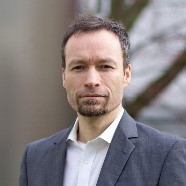Scaling-Up Macroalgal Production
A special issue of Journal of Marine Science and Engineering (ISSN 2077-1312). This special issue belongs to the section "Marine Biology".
Deadline for manuscript submissions: closed (1 April 2022) | Viewed by 35005
Special Issue Editors
Interests: marine ecology; plant physiology; marine environment; marine biodiversity; sustainability; climate change; ocean acidification; calcification; aquatic ecology; marine biology; eutrophication; benthic ecology; carbon dioxide; estuarine science; phycology; macroalgae; seaweed biology; marine algae; experimental biology; cultivation; plant ecophysiology; marine botany
Special Issue Information
Dear Colleagues,
This Special Issue focuses on the challenges, considerations, and, most importantly, progress in the realm of scaling up macroalgal production. The cultivation of macroalgae has the potential to fulfill many of the United Nations Sustainability Goals and simultaneously reduce pressure on natural standing stocks, yet many barriers remain that have prevented the expansion of production to commercially relevant scales. Therefore, we invite contributions from researchers in both academia and industry that report or review the progress and future directions of scaling up macroalgal production. The scope of the Special Issue covers all methods and stages of macroalgal production. This includes, but is not limited to, the areas of ocean farming, offshore production, seaweed hatcheries, seed stock production, disease prevention, biorefining, cost efficiency, and processing. Particularly welcome are contributions related to scaling up land-based production.
Dr. Laurie Hofmann
Dr. Stefan Sebök
Guest Editors
Manuscript Submission Information
Manuscripts should be submitted online at www.mdpi.com by registering and logging in to this website. Once you are registered, click here to go to the submission form. Manuscripts can be submitted until the deadline. All submissions that pass pre-check are peer-reviewed. Accepted papers will be published continuously in the journal (as soon as accepted) and will be listed together on the special issue website. Research articles, review articles as well as short communications are invited. For planned papers, a title and short abstract (about 250 words) can be sent to the Editorial Office for assessment.
Submitted manuscripts should not have been published previously, nor be under consideration for publication elsewhere (except conference proceedings papers). All manuscripts are thoroughly refereed through a single-blind peer-review process. A guide for authors and other relevant information for submission of manuscripts is available on the Instructions for Authors page. Journal of Marine Science and Engineering is an international peer-reviewed open access semimonthly journal published by MDPI.
Please visit the Instructions for Authors page before submitting a manuscript. The Article Processing Charge (APC) for publication in this open access journal is 2600 CHF (Swiss Francs). Submitted papers should be well formatted and use good English. Authors may use MDPI's English editing service prior to publication or during author revisions.
Keywords
- macroalgae
- seaweed
- aquaculture
- scaling up
- ocean farming
- seaweed nursey
- seed stock
- biorefinery
- land-based aquaculture
- recirculating aquaculture systems
Benefits of Publishing in a Special Issue
- Ease of navigation: Grouping papers by topic helps scholars navigate broad scope journals more efficiently.
- Greater discoverability: Special Issues support the reach and impact of scientific research. Articles in Special Issues are more discoverable and cited more frequently.
- Expansion of research network: Special Issues facilitate connections among authors, fostering scientific collaborations.
- External promotion: Articles in Special Issues are often promoted through the journal's social media, increasing their visibility.
- Reprint: MDPI Books provides the opportunity to republish successful Special Issues in book format, both online and in print.
Further information on MDPI's Special Issue policies can be found here.






